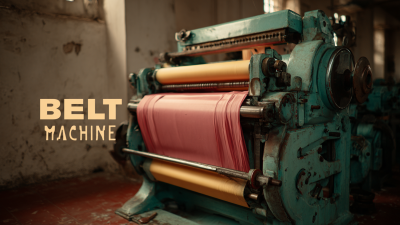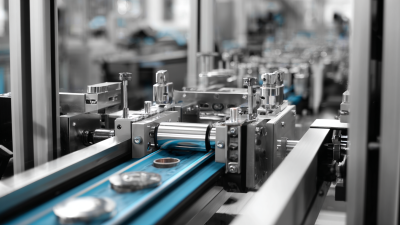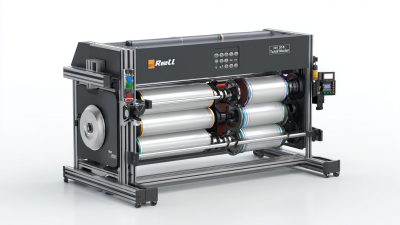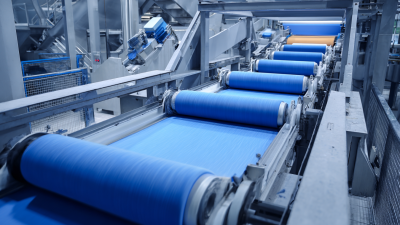In today's competitive manufacturing landscape, selecting the right equipment is critical for optimizing production efficiency and reducing operational costs. Among various machinery, the Belt Cutting Machine stands out as an essential tool for businesses involved in textile production, automotive manufacturing, and other industries requiring precise material handling and cutting capabilities.
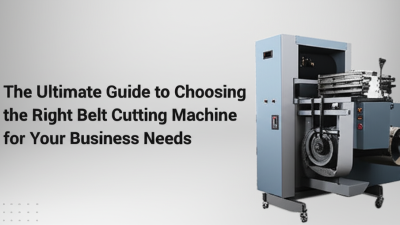
According to a recent report by MarketsandMarkets, the global belt cutting machine market is expected to grow at a CAGR of 6.7% from 2023 to 2030, reflecting the increasing demand for automated cutting solutions. As companies strive to improve productivity and maintain quality, understanding the different types of belt cutting machines and their specific applications becomes imperative. This guide aims to equip business owners with the necessary insights to make informed choices that align with their operational needs and future growth strategies.
When selecting a belt cutting machine for your business, it is crucial to understand the various types available and how they align with your specific needs. Belt cutting machines can be broadly classified into electric and manual models. Electric belt cutting machines are ideal for high-volume operations, offering speed and precision. They are equipped with advanced features that enhance productivity, making them suitable for industries requiring large-scale fabrication.
On the other hand, manual belt cutting machines provide a more hands-on approach, allowing for greater control over the cutting process. These machines are often more affordable and can be more suitable for small to medium-sized businesses that may not require the rapid output of electric options. Additionally, some machines specialize in cutting specific materials, such as rubber or leather, so it’s essential to identify the materials you'll be working with to ensure compatibility. Understanding these distinctions will guide you in choosing the right belt cutting machine that fits your operational demands and budget.
When selecting a belt cutting machine, understanding the key features is crucial to aligning the equipment with your business needs. A high-quality machine should offer precision cutting capabilities, ensuring consistent sizing across batches. According to a 2022 industry report by the Machinery Manufacturers Association, machines with laser-guided technology improve cutting accuracy by up to 15%, significantly reducing material waste and labor costs.
Another essential feature to consider is the machine's versatility. The ability to handle various belt materials, such as PVC, leather, and rubber, is beneficial for businesses with diverse product lines. A versatile machine can accommodate different thicknesses and widths, allowing for more efficient production processes. As highlighted by the Industrial Cutting Equipment Insights Report, 62% of businesses cited adaptability as a vital factor in boosting their productivity.
**Tip:** Always evaluate the machine’s maintenance requirements and support services provided by the manufacturer. Machines that are easy to maintain can reduce downtime, improving your overall operational efficiency. Additionally, checking for warranties and customer support can provide valuable peace of mind.
When selecting a belt cutting machine, it's essential to accurately assess your business needs, focusing on size, volume, and material requirements. The size of the machine should correspond to the dimensions of the material you frequently cut. If your business deals with larger sheets, ensure that the machine can accommodate them without compromising precision.
Volume is another crucial aspect to consider. If your production demands high volumes, opt for machines that offer a faster cutting speed and higher throughput. It's important to evaluate your current and future production needs to ensure the machine can sustain your business growth.
Tips: Always consult your production team before finalizing the machine size and capacity. They can provide insights into the average sizes and volumes typically processed. Additionally, consider the types of materials you will be cutting; different machines are designed for specific materials like leather, fabric, or synthetic materials. Selecting a machine compatible with your supported materials is crucial for optimal performance.
When selecting a belt cutting machine for your business, budget considerations are crucial in ensuring that you find the best value for your investment. It's essential to evaluate both the initial purchase price and the long-term operational costs. Cheaper machines may attract you with their low upfront costs, but they could lead to higher maintenance expenses and decreased efficiency in the long run. Calculating the total cost of ownership, which includes parts replacement, power consumption, and labor, will give you a clearer picture of the best value.
In addition to the cost, consider the machine's performance and functionality relative to your specific needs. A well-priced machine that meets your production requirements and offers reliable performance is a better choice than a low-cost option that cannot keep pace with your output demands. Look for features that enhance precision and speed while ensuring durability. Investing in quality often translates to lower operational costs over time, making it a key factor in your decision-making process. Ensure that you also take into account the warranty and customer support offered by the manufacturer, as these can save you money and trouble in the future.
| Machine Model | Cutting Width (inches) | Max Cutting Speed (ft/min) | Voltage (V) | Price Range ($) |
|---|---|---|---|---|
| Model A | 12 | 30 | 220 | 500 - 700 |
| Model B | 15 | 45 | 230 | 800 - 1000 |
| Model C | 10 | 25 | 110 | 400 - 600 |
| Model D | 20 | 50 | 240 | 900 - 1200 |
When it comes to ensuring the longevity and performance of your belt cutting machine, regular maintenance is key. A well-maintained machine not only enhances productivity but also reduces the need for costly repairs.
One essential tip is to clean the machine thoroughly after each use. Dust and debris can accumulate and interfere with the cutting process, leading to potential damage. Use a soft brush and cloth to remove residue from the cutting area, ensuring that all components remain free from contaminants.
Another critical aspect of maintenance is to regularly check and adjust the machine's alignment. Misalignment can lead to uneven cuts and increased wear on the machine's components. Periodically inspect the cutting blades and other moving parts for signs of wear or damage, and replace them as needed. Keeping a close eye on alignment and blade condition will not only enhance cutting precision but also extend the lifespan of your machine.
Lastly, always refer to the manufacturer's guidelines for specific maintenance schedules and practices. Different machines have unique requirements, and adhering to these recommendations will keep your equipment running smoothly. Consider creating a maintenance log to track inspections and replacements, ensuring that you stay on top of your machine’s needs.


